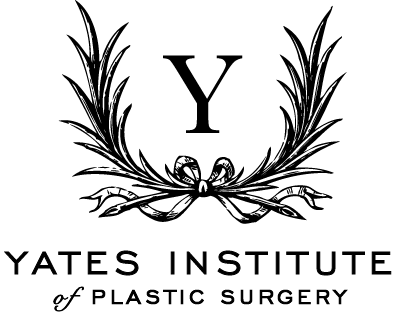Breast Reductions are Covered by Insurance?
Breast reduction surgery is a relatively common procedure that is done for different reasons. Some of them are purely cosmetic, while others are medically necessary. This plastic surgery procedure reduces the size of your breasts to eliminate physical discomfort or pain associated with having large breasts. It's also done to improve self-esteem, confidence, and body image among women who feel they're too large chested for their body frame.
The first thing you’d wonder when considering breast reduction is, “Will my health insurance cover the surgery?” Well, whether or not your insurance will cover breast reduction depends on the insurance company’s policies. In other words, your insurance provider can cover your breast reduction surgery but at its own discretion.
Most insurance companies cover the procedure only if it is medically necessary. But whether your insurer will cover the surgery is not always black-and-white because the policies and criteria differ from insurer to insurer.
If you're considering breast reduction, take the time to review what your insurance plan offers so that you can make an informed decision about whether or not this is right for you.
General Criteria for Breast Reduction Insurance Coverage
Luckily, most insurance carriers will cover the surgery as long as the patient meets specific requirements and criteria defined by each insurance provider or company. Today, most insurers give more weight to the discomforts, pain, and other symptoms of the patient to decide if breast reduction is required and can alleviate the symptoms. Plus, they also base their decisions to a certain extent on an analysis of the volume of tissue that has to be removed from the breasts against the weight and height of the patient.
And since more providers are now giving more weight to a patient’s symptoms when assessing them for breast reduction, your chances of securing insurance coverage are higher if you have back, shoulder, or neck pain due to your large breasts. Also, skin rashes underneath the breasts or dermatitis or breast pain may qualify you for breast reduction insurance coverage.
The exact terms and conditions used to determine whether your breast reduction should be covered depend on multiple factors, such as the insurance provider, your city or state, and your policy type. And depending on how well you deserve coverage, the insurer may cover some part of the surgery or cover the entire cost. In case of partly-coverage, you’ll have to pay for the remaining expenditures from your pocket.
It can be a little confusing when figuring out your candidacy for insurance coverage. As such, we recommend you visit a board-certified plastic surgeon to determine whether or not your insurance will cover breast reduction. Plus, it is a good idea to first read your policy documents or call your insurance company and ask about their criteria for breast reduction coverage.
How Plastic Surgeons Determine Breast Reduction Insurance Coverage
Your plastic surgeon can help you steer through the process of understanding whether you’ll get insurance coverage for a breast reduction surgery. Generally, the surgeon will measure your breasts and ask you about any pain or discomforts you may be experiencing.
The plastic surgeon will then use the inputs to determine the amount of tissue that must be removed from each of your breasts to relieve your health issues. The doctor will then submit the necessary information in the form of a letter of medical necessity to your insurance provider for approval.
Insurance companies typically use a simple formula to measure your body surface area (BSA), focusing mainly on your weight and height. Plus, they will match it against the Schnur Sliding Scale, a standardized evaluation scale used to determine whether breast reduction is medically necessary.
Unfortunately, the Schnur Sliding Scale is outdated and doesn’t include recent literature on breast reduction. As such, many people think it is discriminatory, insisting that insurers use it to deny coverage to deserving candidates despite symptoms and medical justification.
Also, remember that these are not the only requirements for breast reduction insurance coverage. Each insurance company has its own set of policies and eligibility criteria. So, don't try to outsmart insurance companies to get your procedure covered because that can result in denial even if you genuinely deserve coverage. Instead, talk to your insurance company well before going in for a consultation with your plastic surgeon and meet their criteria.
But keep in mind that your plastic surgeon plays a crucial role in helping you get your breast reduction covered. Suppose your insurance provider turns down your coverage request by insisting that breast reduction is a cosmetic procedure. In that case, your surgeon can help convince them about the medical necessity of the intervention. Plus, the doctor can educate the insurer about the difference between cosmetic and symptomatic breast reduction.
Significance of Previous Consultations and Treatments
Your chances of securing coverage for macromastia surgery will be higher if you have already sought treatments or consultations for your condition in the past. For instance, if you were recommended for physical therapy or had orthopedic consultation in the past, it can help get your breast reduction surgery covered. But a lack of such a medical history and evidence thereof can be problematic since breast reduction is generally thought of as aesthetic surgery. It also depends on how the insurance company’s assessor sees your condition.
Most insurance companies would ask you to submit reports from multiple plastic surgeons, two or three or average, to decide whether or not they should cover the surgery. Plus, they usually ask for documentary evidence of your past treatments and consultations (6-12 months of documentation) for the problems stemming from having large breasts.
Final Words
The first step to determine whether your insurance company generally covers breast reduction surgeries is to read your policy documents and talk to the company. And if they do, ask them for a list of the requirements or criteria to secure coverage for the procedure. Next, check whether or not you meet the items listed in the prerequisites.
Remember that you’ll first have to meet all the insurer's requirements to qualify for coverage. The criteria may include evidence of past consultation with or treatment from a dermatologist, therapist, chiropractor, or orthopedist. In that case, you should seek consultation with or treatments from these medical professionals before consulting a plastic surgeon. And once you do, your plastic surgeon can assist you in securing insurance coverage by submitting a letter of medical necessity.
In case of denial by your insurance company, despite that you’re experiencing health problems due to having large breasts, you enjoy the legal right to file an appeal. Most insurance companies describe the appeal process in the letter of rejection. You can use your medical history, letters from multiple plastic surgeons (and other medical professionals) to file a strong appeal.


